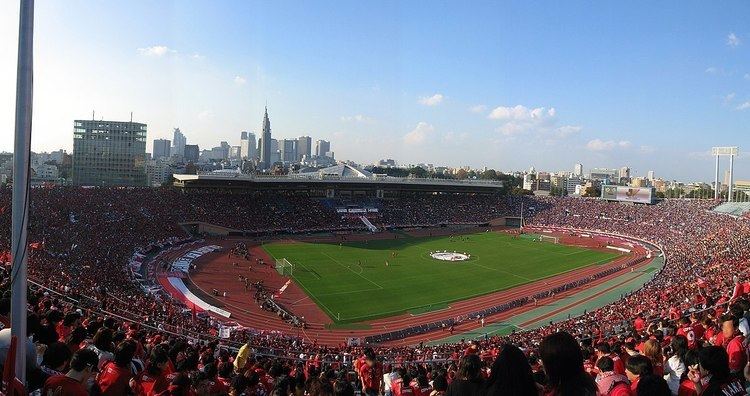Field size 105 × 68 m Closed 2014 (For rebuilding) Phone +81 3-3401-3881 Inaugurated 1958 | Surface Grass Opened 1958 Owner Japan Sport Council Architect Mitsuo Katayama | |
 | ||
Capacity 48,000 (original seated) Record attendance 91,107Pride Shockwave, at 21–22 March 2014 Address 10-2 Kasumigaokamachi, 新宿区 Tokyo 160-0013, Japan Similar New National Stadium, Meijijingu Gaien, Olympic Stadium, Saitama Stadium 2002, Meiji Jingu Stadium | ||
National Stadium (国立競技場) was a multi-purpose stadium in Kasumigaoka, Shinjuku, Tokyo, Japan. The stadium served as the main stadium for the opening and closing ceremonies, as well as being the venue for track and field events at the 1964 Summer Olympic Games. The Japan national football team's home matches and major football club cup finals were held at the stadium. The stadium's official capacity was 57,363, but the real capacity was only 48,000 seats.
Contents
Demolition was completed in May 2015, and the site will be redeveloped with a new larger-capacity National Olympic Stadium. The new stadium is set to be the main venue for the 2020 Summer Olympics and Paralympic Games.
The original plans for the new stadium were scrapped in July 2015 by Japanese Prime Minister Shinzo Abe, who announced a rebid after a public outcry because of increased building costs. As a result, the new design will not be ready for the 2019 Rugby World Cup, as originally intended. A new design created by architect Kengo Kuma was chosen in December 2015 to replace the original design and is to be completed in November 2019.
History
The stadium was completed in 1958 as the Japanese National Stadium on the site of the former Meiji Shrine Outer Park Stadium. Its first major event was the 1958 Asian Games.
The venue was unscathed by the 2011 Tōhoku earthquake and tsunami. Yasuhiro Nakamori, international relations director for the Japanese Olympic Committee, told Around the Rings he attributed the lack of damage to Japan's stringent building codes.
Notable Events
Transportation
Access to the stadium was from Sendagaya or Shinanomachi stations along the JR Chūō-Sōbu Line; from Kokuritsu Kyogijo Station on the Toei Oedo Line; and from Gaienmae Station on the Tokyo Metro Ginza Line.
